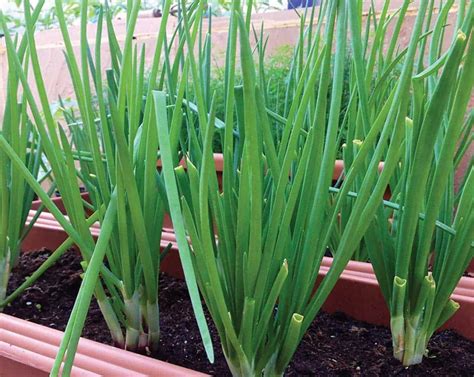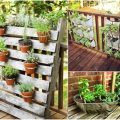Essential Tips for Growing Green Onions in Containers: A Complete Guide for Urban Gardeners
Green onions, also known as scallions, are a staple in many culinary dishes due to their versatility and ease of growth. Whether you’re a seasoned gardener or just starting out, growing green onions in containers can be a rewarding way to cultivate your own fresh produce, especially for those living in urban environments with limited space. This article provides essential tips and techniques for successful container gardening, particularly for green onions, and covers everything from the basics of plant care to practical applications in the kitchen.
Key Concepts in Green Onion Container Gardening
Before diving into the specifics of growing green onions in containers, it’s important to understand the key concepts behind container gardening. This method allows for growing plants in confined spaces, making it ideal for balcony gardening, urban gardening, or for those who want to start small space gardening. By using appropriate containers, soil, and gardening techniques, even individuals without access to traditional garden beds can grow their own food successfully.
- Container Size: Green onions don’t require much space, but the container should be deep enough (at least 6 inches) to allow root development.
- Soil Mix: A well-draining potting mix is crucial for healthy growth, as compacted or overly moist soil can stunt growth or lead to rot.
- Sunlight Requirements: Green onions need at least 6-8 hours of sunlight per day for optimal growth.
- Watering Needs: Regular, consistent watering is important to keep the soil moist but not soggy.
- Fertilization: A balanced fertilizer (10-10-10) can support growth, but green onions generally require minimal feeding.
Historical Context of Container Gardening
The concept of container gardening dates back centuries and has roots in various cultures, including ancient Egypt and China, where people used containers to cultivate herbs, vegetables, and ornamental plants. Over time, container gardening evolved into an important aspect of urban living, particularly during periods of population growth and land scarcity. The rise of balcony gardening and rooftop gardens in modern cities highlights the adaptability of container gardening techniques, making it possible for people to grow plants in non-traditional spaces.
Current State of Urban Gardening
Today, urban gardening is on the rise, with more people turning to container gardening as a solution for growing fresh produce in small spaces. The growing interest in sustainable living and farm-to-table dining has encouraged urban dwellers to take up gardening on balconies, patios, and even windowsills. Green onions, due to their easy maintenance and space efficiency, are a popular choice among container gardeners, especially for those who want a steady supply of fresh herbs and vegetables without needing a traditional garden plot.
Practical Applications of Growing Green Onions
Green onions offer a wealth of practical uses in both the kitchen and the garden. Once established, they can be harvested continuously, making them an economical and sustainable crop for home use. Here are some practical ways to incorporate green onions into your everyday life:
- Culinary Uses: Green onions add a fresh, tangy flavor to salads, soups, stir-fries, and more. Both the green tops and the white bulbs can be used in cooking.
- Re-Growth Potential: Green onions can be cut at the base, leaving the bulb intact, and placed back in water to regrow. This makes them one of the most sustainable crops for continuous harvesting.
- Companion Planting: Green onions are excellent companion plants for vegetables such as carrots, lettuce, and tomatoes, as they can help deter pests.
Case Studies: Successful Green Onion Container Gardens
| Gardener | Container Type | Location | Harvest Yield | Challenges | Lessons Learned |
|---|---|---|---|---|---|
| Sarah, Brooklyn | Clay Pots | Balcony | 10 plants per season | Limited sunlight | Position plants near the railing for maximum sunlight |
| James, Seattle | Plastic Planters | Rooftop | 15 plants per season | Excess moisture | Ensure good drainage to avoid waterlogged soil |
| Ana, Los Angeles | Terracotta Pots | Patio | 20 plants per season | Pest issues | Use organic pest control methods, such as neem oil |
Stakeholder Analysis: Who Benefits from Growing Green Onions?
Various stakeholders can benefit from container gardening, particularly when growing easy-to-maintain crops like green onions. Below is an analysis of key groups:
- Urban Dwellers: Those living in apartments or homes without gardens can grow fresh, healthy produce on balconies or patios.
- Restaurants and Chefs: Culinary professionals who require fresh ingredients can benefit from growing herbs and vegetables in small spaces.
- Community Garden Initiatives: Local groups promoting sustainability and self-reliance often encourage container gardening as a way to involve more people in food production.
- Educational Programs: Schools and educational institutions can use container gardening as a tool to teach students about plant biology and sustainable living.
Implementation Guidelines for Growing Green Onions
Successfully growing green onions in containers requires some key guidelines:
- Choose the Right Container: Select a pot with at least 6 inches of depth, ensuring it has drainage holes to prevent waterlogging.
- Use Quality Potting Mix: Opt for a light, well-draining mix designed for containers. Avoid garden soil, which may compact over time.
- Plant the Seeds or Transplants: Space seeds or young plants about 2 inches apart to allow for proper growth.
- Water Consistently: Keep the soil evenly moist, but avoid overwatering, which can cause rot.
- Fertilize Sparingly: Apply a balanced fertilizer every 4-6 weeks, but don’t overfeed, as green onions don’t require heavy fertilization.
Ethical Considerations in Container Gardening
Ethical considerations in container gardening often revolve around sustainability and environmental impact. By growing your own food, you reduce the carbon footprint associated with transporting produce. Additionally, container gardening encourages organic practices and discourages the use of harmful pesticides. However, it’s important to be mindful of water usage, especially in regions facing drought conditions.
Limitations and Future Research
While green onion container gardening is accessible and relatively simple, there are limitations. Pests, limited sunlight, and water retention can pose challenges, especially in urban environments. Future research could focus on developing more resilient plant varieties and more efficient container systems to optimize space and growth in urban settings. Additionally, innovations in hydroponic systems could offer alternatives for those with extremely limited outdoor access.
Expert Commentary
Green onions are one of the most rewarding crops to grow in containers due to their low-maintenance requirements and versatility in cooking. Whether you’re a beginner looking to start your own urban garden or a seasoned gardener exploring balcony gardening, green onions provide both sustainability and flavor. Experts agree that with the right care and attention to detail, container gardening can yield successful harvests even in the smallest spaces, making it an excellent option for those looking to bring nature into urban living.


